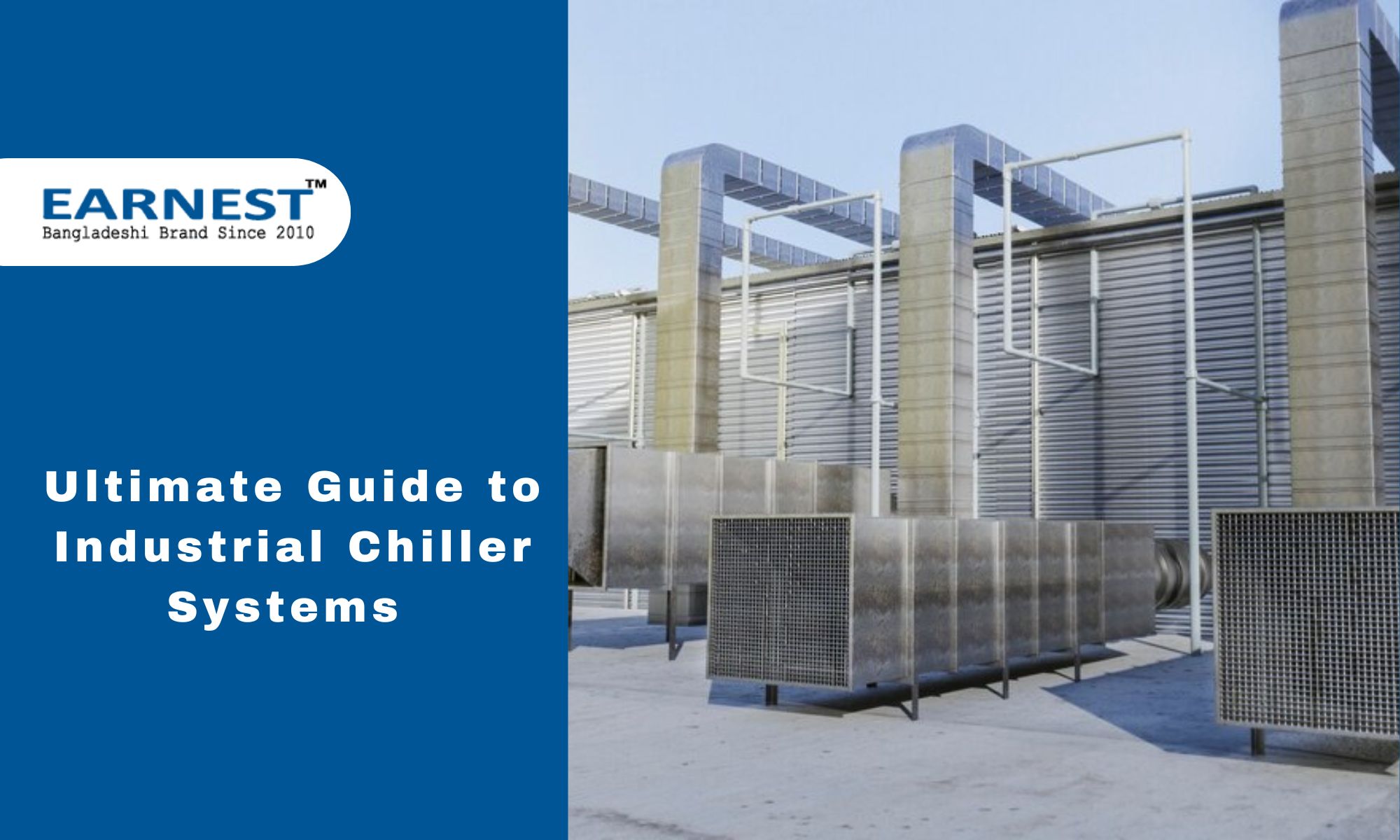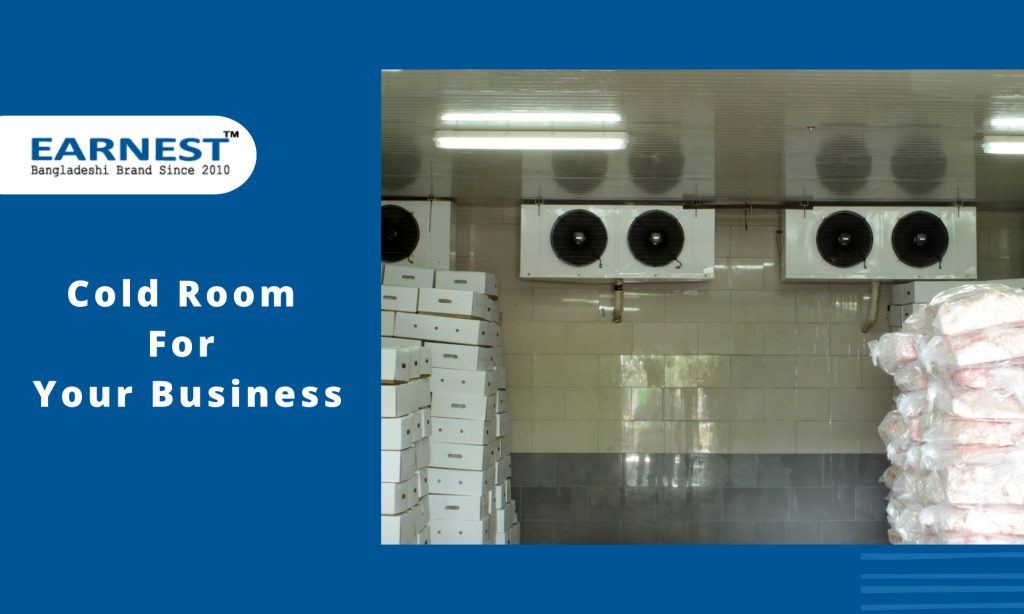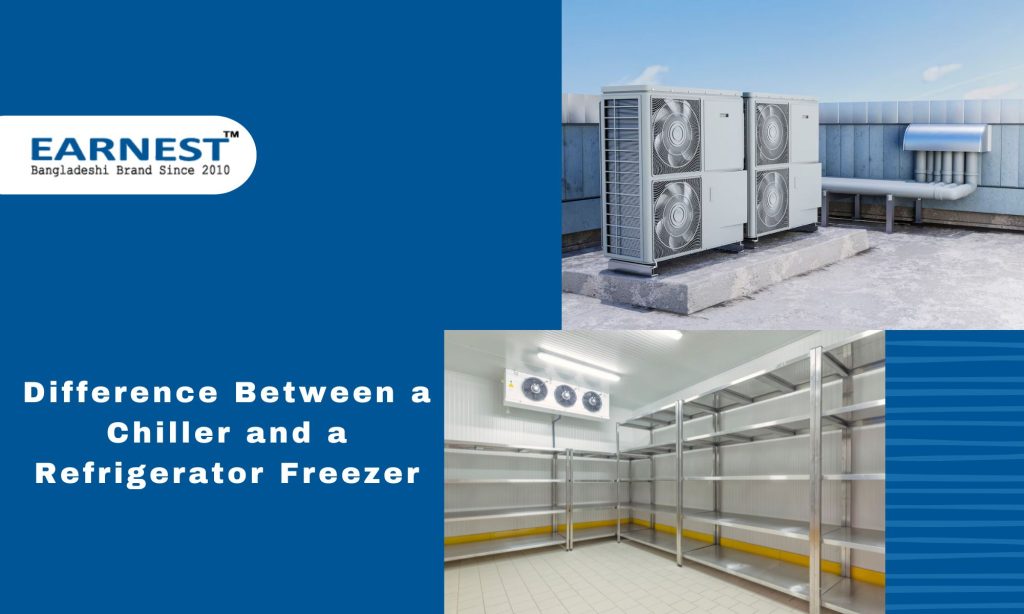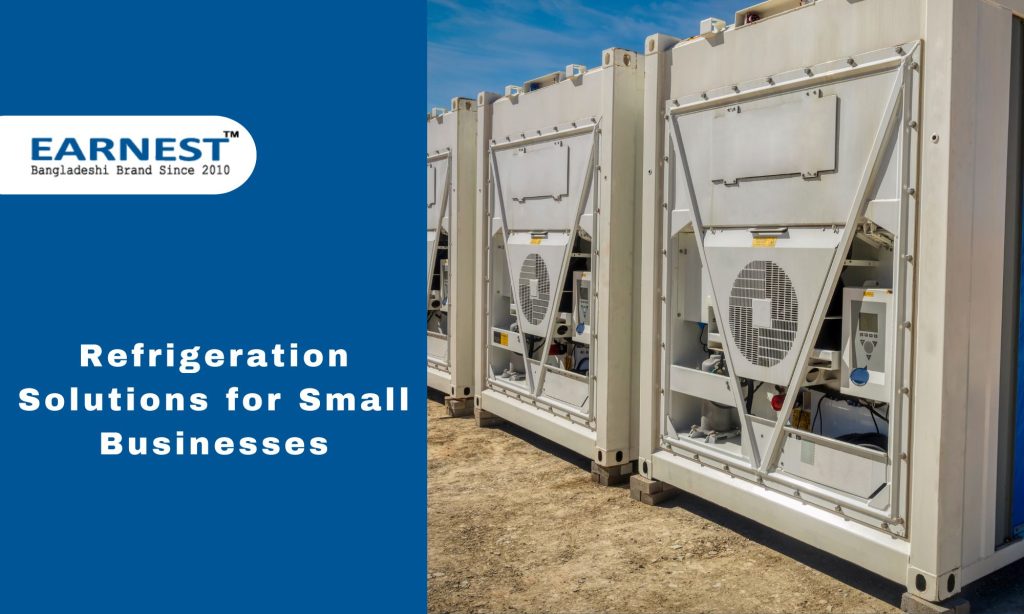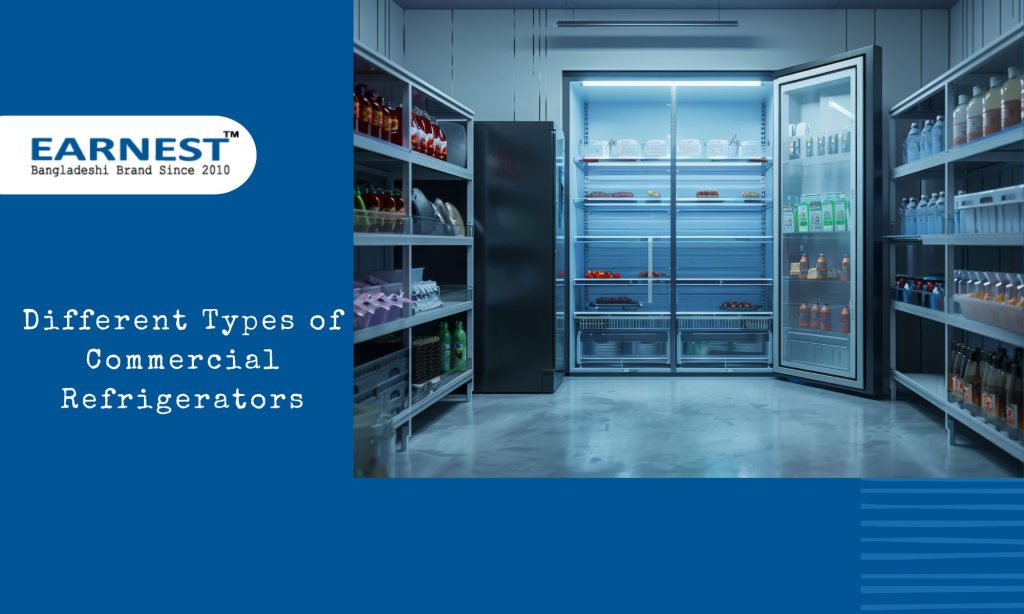In a country like Bangladesh where the GDP is dominated by revenues from manufacturing industries, Industrial chiller systems are crucial in helping these industrial setups survive. Various sectors, including manufacturing, food processing, pharmaceuticals, and others need HVAC (heating, ventilation, and air conditioning) support.
The industrial chillers help maintain the desired HVAC for equipment and processes, ensuring optimal performance and energy efficiency.
This comprehensive guide will walk you through the fundamentals of industrial chiller systems, their types, components, working principles, applications, maintenance, and trends in the local industry.
What is an Industrial Chiller System?
An industrial chiller system is a refrigeration system used to cool process fluids, machinery, or air in industrial settings. Chillers are essential for maintaining precise temperature control, which is critical for various industrial applications.
The main purpose of a chiller system is to extract heat from an indoor environment and transfer it outside. If not managed properly, this excess heat can negatively affect process performance and efficiency and create uncomfortable indoor conditions.
Types of Industrial Chiller Systems
There are mainly three main types of industrial chillers:
Air-Cooled Chillers
Air-cooled chillers use air to dissipate heat from the condenser. They are typically used in applications where water is scarce or expensive. These chillers are easy to install and maintain but may be less energy-efficient than water-cooled chillers, especially in hot climates.
Air-cooled chillers cool fluids and work simultaneously with the air handler system of a facility. These industrial chillers operate via the use of fans to eject heat outside the building. Unlike water-cooled counterparts, they don’t rely on cooling towers. The system uses air to cool water and fluids that are circulated through the system.
Water-Cooled Chillers
Water-cooled chillers utilize water via a cooling tower to remove heat from the condenser. That is because condensers of water-cooled chillers use water as a stimulant and cooling material. The wet surfaces are more successful at transferring heat and also compress at wetter bubble temperatures.
They are more energy-efficient than air-cooled chillers and are suitable for larger installations where water is readily available. These systems require regular maintenance to prevent scaling and corrosion.
Also, the air-cooled chillers are usually installed on top of the roof and water-cooled chillers are usually installed in the basement.
Evaporative Condensed Chillers
Evaporative condensed chillers combine air and water cooling methods. They use water to pre-cool the air before it passes over the condenser coils, improving efficiency. These chillers are ideal for environments with moderate temperatures and humidity levels.
Bonus: Absorption Chillers
Absorption chillers use heat sources such as natural gas, steam, or hot water to drive the refrigeration cycle. They are commonly used in facilities with excess heat energy available, such as cogeneration plants. These chillers are highly efficient and environmentally friendly, not using CFCs or HCFCs.
Our blog post on the Differences Between Air-Cooled and Water-Cooled Chillers presents details of how the two major industrial chillers work in their own ways, the different types of air and water-cooled chillers, the different components, and their uses.
The expansion valve regulates the flow of refrigerant into the evaporator, reducing its pressure and temperature. This process allows the refrigerant to absorb heat efficiently in the evaporator.
How Do Industrial Chiller Systems Work?
Industrial chillers work by sending water to whatever process needs cooling. The water extracts the heat from the source; the warmed water is then sent to the chiller. A portion of the warmed water is transferred into the atmosphere as vapor. To make the complete cycle happen, four main components are required in a chiller system:
Evaporator
The evaporator is where the refrigerant absorbs heat from the process fluid or air, causing it to evaporate. This component is crucial for transferring heat from the process to the refrigerant.
Compressor
The compressor works like the core of the chiller system. It compresses the refrigerant, increasing its pressure and temperature. The compressor takes the low-pressure gas and turns it into high-pressure, which in turn allows it to flow through to the next step, the condenser.
There are several types of compressors used in chiller systems: reciprocating, screw, centrifugal, and scroll compressors.
Condenser
The condenser dissipates heat from the refrigerant to the surroundings. In air-cooled chillers, the condenser uses air to remove heat, while in water-cooled chillers, it uses water. The efficiency of the condenser directly affects the overall performance of the chiller.
Expansion Valve
As part of the final step in the process, the liquid returns to the expansion valve and is directed back to the evaporator. The expansion valve regulates the flow of refrigerant into the evaporator, reducing its pressure and temperature. This process allows the refrigerant to absorb heat efficiently in the evaporator.
The cycle restarts again.
Things you should look out for when buying an industrial chiller
The rightly set up industrial chilling system will contribute immensely to the overall performance of a manufacturing or commercial plant. That is why it is one of the most important tools to look out for when designing an industrial setup. Five factors one should consider while purchasing an industrial chiller system are:
Size
Price
Application
Type
Have a read on Chiller I 05 Best Consider points for your industry to understand what makes your purchase decision effective and worthwhile.
Maintenance and Troubleshooting Tips
Industrial chillers control temperatures, the condition of air, and dehumidify the air in plants with machines and process fluids. All industries need heating and cooling processes running all day. Factories need chillers to run smoothly without damaging systems or causing safety dangers. Thus, maintaining industrial chillers is mandatory.
If you want chillers to work well over a long time, you need to maintain them. Maintenance helps a machine operate consistently. It ensures durability and consistent performance. Industrial chillers should be maintained and checked daily, weekly, monthly, and yearly.
To ensure the efficient and reliable operation of an industrial chiller system, regular maintenance is essential. Key maintenance tasks include:
- Cleaning Condenser Coils: Dirt and debris can reduce heat transfer efficiency. Regularly clean the coils to maintain optimal performance.
- Inspecting Refrigerant Levels: Ensure the system has the correct refrigerant charge. Low levels can reduce efficiency and cause damage.
- Checking for Leaks: Inspect the system for refrigerant leaks and repair them promptly to prevent performance issues.
- Lubricating Moving Parts: Lubricate compressors, fans, and other moving parts to reduce wear and tear.
- Monitoring System Performance: Regularly check temperatures, pressures, and flow rates to detect potential issues early.
To know more in detail about the maintenance of industrial chiller systems, take a look at Industrial Chiller Maintenance Guideline By Earnest.
Common Issues and Solutions
Industrial chillers can malfunction and set the alarms ringing, disrupting plant operations. Among the many reasons a chiller may stop working, three reasons stand out:
Insufficient Maintenance
Chillers may work poorly or stop working if the operators fail to ensure basic maintenance methods. All chiller parts require regular inspections and maintenance to remain in good condition. You should schedule preventive and corrective maintenance tasks with your operators to avoid spending more energy to cool down and malfunction the machine.
Incorrect Construction
When you are setting up a plant or factory, spacing and constructing equipment and machines matter. Undersized chillers may generate insufficient airflow and poor cooling. On the other hand, oversized chillers may create problems for operations needing a lower load of energy, which results in higher plant operation costs. This is due to the frequent cycling needed for oversized chillers.
Incorrect Operating Procedures
Regardless of the purchase, you should always adhere to the manufacturer’s manuals that contain the guidelines for correct operations. Even if initially the machine works well, in the long run, it will become more vulnerable to problematic performance issues, reducing its lifespan.
You should also note that exceeding the manufacturer’s recommended water flow rate reduces the chiller’s efficiency. More water input does not yield more performance output. This is because too much water can expedite rusting in the containers, making the coolant fail.
Know more the the abovementioned problems and their solutions in our blog post 3 Common Industrial Chiller Problems And Solutions.
Trends in the Local Industry
The industrial chiller industry in Bangladesh is continuously evolving and is becoming a much-needed part of the commercial industries. Industrial chiller manufacturers like Earnest have been supplying top-quality and highly effective industrial chillers since 2010.
Earnest offers different types and ranges of chillers to over 50 industries around the country, specializing in manufacturing chillers as large or as small as your requirements demand. We produce both Air-Cooled and Water-Cooled chillers to meet any industrial need.
If you have any queries, feel free to contact Earnest for industrial chiller set up and guidance.
Summing Up
Industrial chiller systems are paramount in many commercial sectors, providing precise temperature control to ensure optimal performance and efficiency. Understanding how different types of chillers, their components, working principles, and maintenance requirements work is crucial for selecting and maintaining the right system for your needs.
With ongoing advancements in technology, the future of industrial chiller systems promises even greater efficiency and sustainability. By staying informed about the latest trends and innovations, businesses can make better decisions, reduce operational costs, and contribute to a greener and safer future for the country’s environment.
The Ultimate Guide to Industrial Chiller Systems: Learn everything about industrial chiller systems, including types, components, working principles, maintenance, and trends in the local industry. Discover how these systems ensure optimal performance and energy efficiency in various sectors like manufacturing, food processing, and pharmaceuticals.

